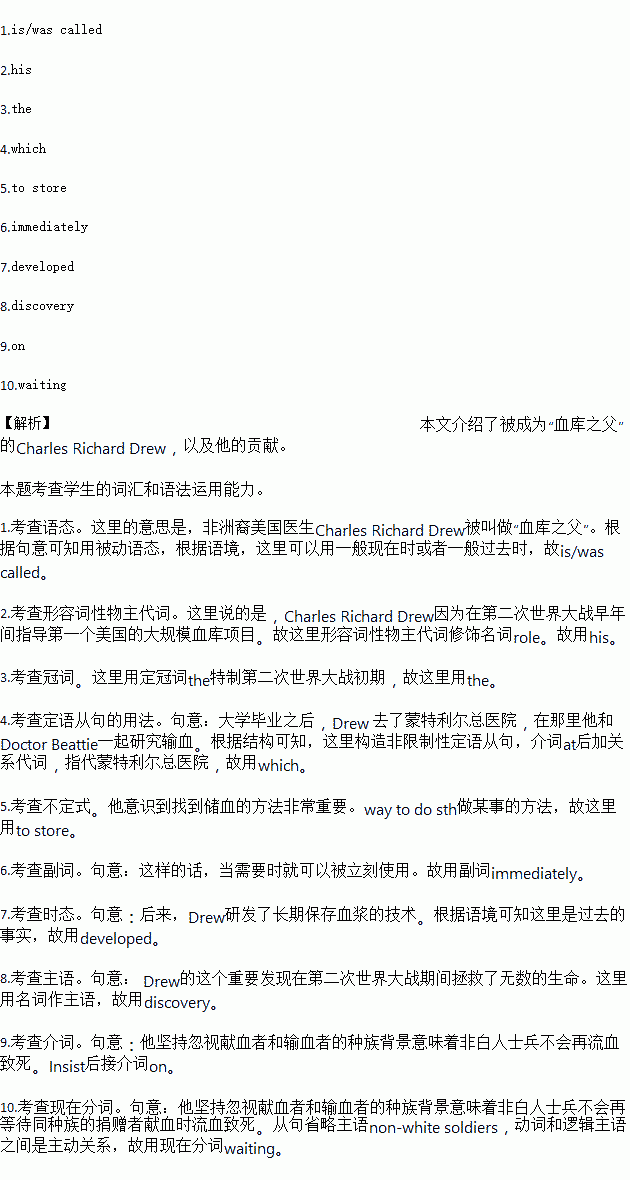题目内容
African-American doctor Charles Richard Drew 1. (call) “the father of the blood bank” for 2. (he) outstanding role in directing America’s first large-scale blood banking program during 3. early years of World War II. He was born in 1904. After graduating from university, Drew went to Montreal General Hospital, at 4. he worked with Doctor Beattie to research into blood transfusions (输血) then and Drew became very interested in the work. He realized that it was very important to find a way 5. (store) blood so that it could be used 6. (immediate) when needed. Later, Drew 7. (develop) the technique for the long-term preservation of blood plasma (血浆).
This significant 8. (discover) of Drew’s saved countless lives during World War II. And his insistence 9. ignoring the racial background of donators and transfusion receivers meant that non-white soldiers no longer bled to death while 10. (wait) for a same-race donor to contribute blood. He died in 1950 after a car accident.
 天天向上一本好卷系列答案
天天向上一本好卷系列答案 小学生10分钟应用题系列答案
小学生10分钟应用题系列答案
